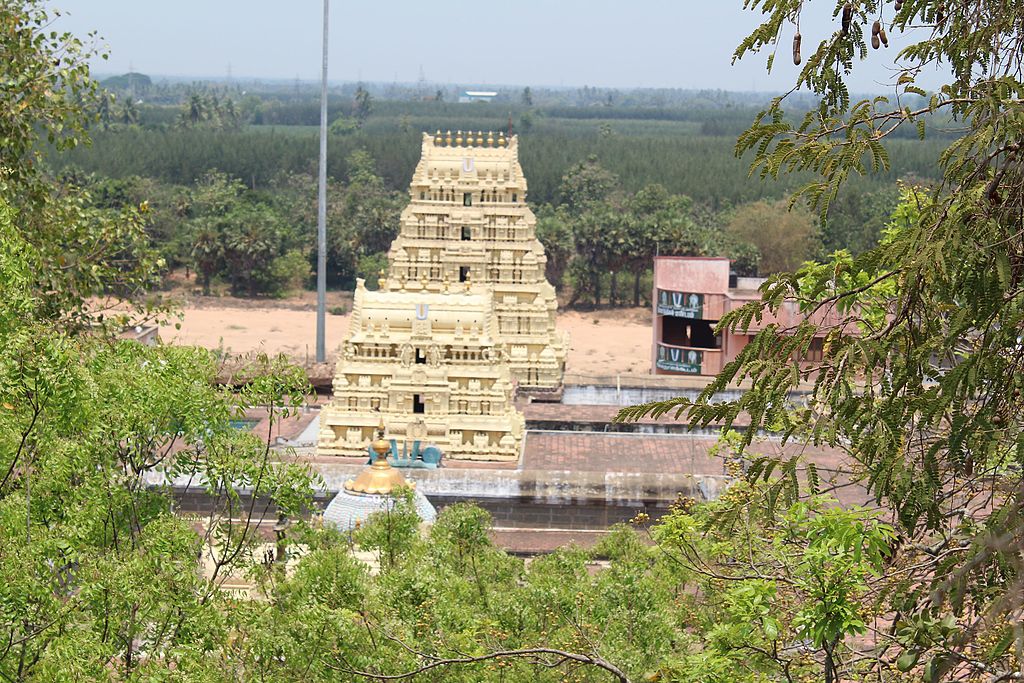Thiruvahindrapuram Sri Devanathaswamy Temple, Cuddalore

Address
Thiruvahindrapuram Sri DevanathaSwamy Temple,Thiruvahindrapuram,Cuddalore,91-4142-287515
Deity
Devanatha Perumal, Amman: Vaikunda Nayagai
Introduction
- Location: Thiruvanthipuram, village near Cuddalore, Tamil Nadu, India
- Deity: Vishnu, worshipped as Devanathaswamy
- Consort: Lakshmi, worshipped as Hemabhujavalli
- Significance:
- One of the 108 Divyadesams dedicated to Vishnu.
- The temple is renowned for being the only historical temple in South India with a shrine dedicated to Hayagriva, the horse-faced avatar of Vishnu.
- The temple is constructed in the Dravidian architectural style.
- Glorified in the Divya Prabandha by Azhwar saints (6th–9th centuries AD).
- Historical Inscriptions:
- Contains fifty inscriptions from prominent rulers including Kulothunga Chola I, Vikrama Chola, Rajaraja Chola III, Jatavarman Sundara Pandyan, Vijayanagara king Achyuta Deva Raya, and Koperunjinga.
- Built during the Medieval Cholas with expansions during the Pandya, Hoysala, and Vijayanagara Empires.
Puranic Significance
- Origin Story:
- Originally believed to have housed a Shiva temple.
- A Chola ruler, who was a Saiva fanatic, aimed to demolish the Vishnu temple in the region. However, the appearance of Vinayagar and Dakshinamurthy (icons found in Shiva temples) startled the ruler.
- The deity, Vishnu, is believed to have appeared before the king, acknowledging the oneness of the almighty.
- Deity’s Iconography:
- The image of Devanathaswamy holds a lotus (symbolizing Brahma) and has a third eye (symbolizing Shiva), representing the oneness of the divine.
- Historical Name Changes:
- The region was originally called Tiruvaheendrapuram, named in honor of Adisesha (Vaheendran), who is believed to have propitiated Indra, the king of celestial deities.
- The name evolved into Thiruvanthipuram over time.
Special Features
- Unique Icons:
- The temple houses the only shrine of Hayagriva in South India.
- The presiding deity, Devanathaswamy, is depicted with a lotus in hand and a third eye like Shiva.
- Historical Significance:
- The temple serves as a symbol of the unity of various divine forces, blending elements of both Vishnu and Shiva worship.
Festivals
- Brahmotsavam (Major Festival):
- A 12-day festival celebrated during the Tamil month of Chittirai (April – May).
- The Brahmotsavam is a major event attracting large gatherings of devotees.
Century/Period/Age
1000-2000 years old
Managed By
Hindu Religious and Charitable Endowments (HRCE)
Nearest Bus Station
Thiruvahindrapuram
Nearest Railway Station
Tiruppapuliyur
Nearest Airport
Puducherry









